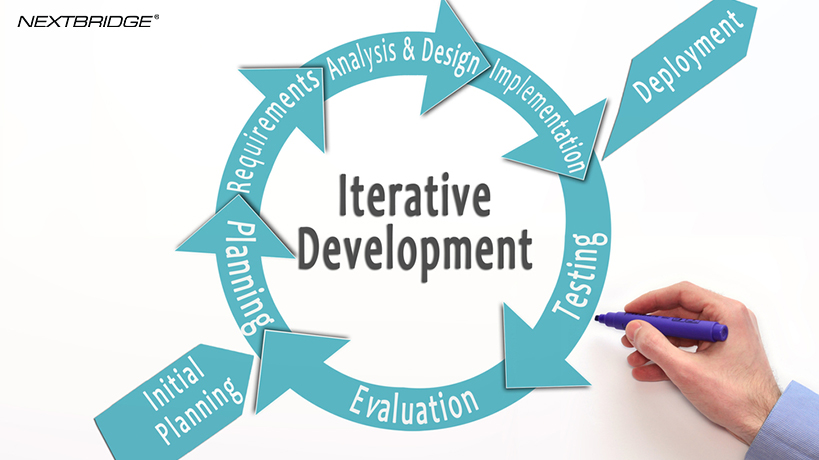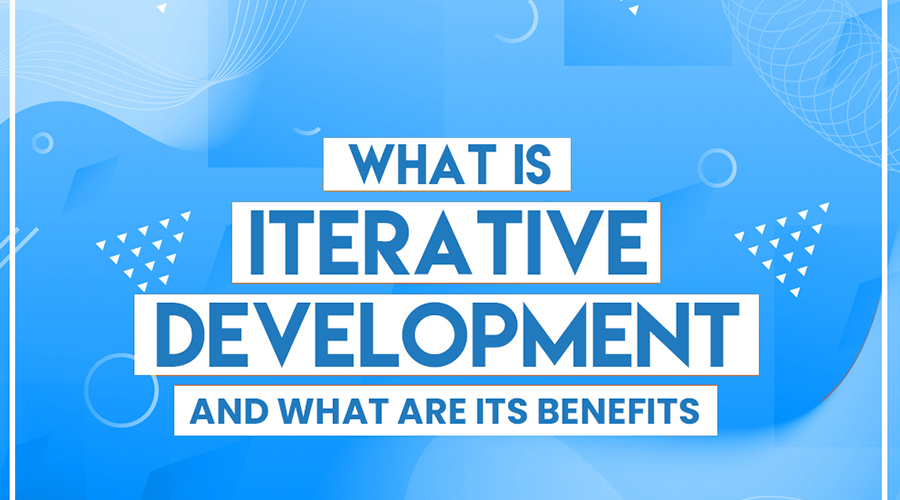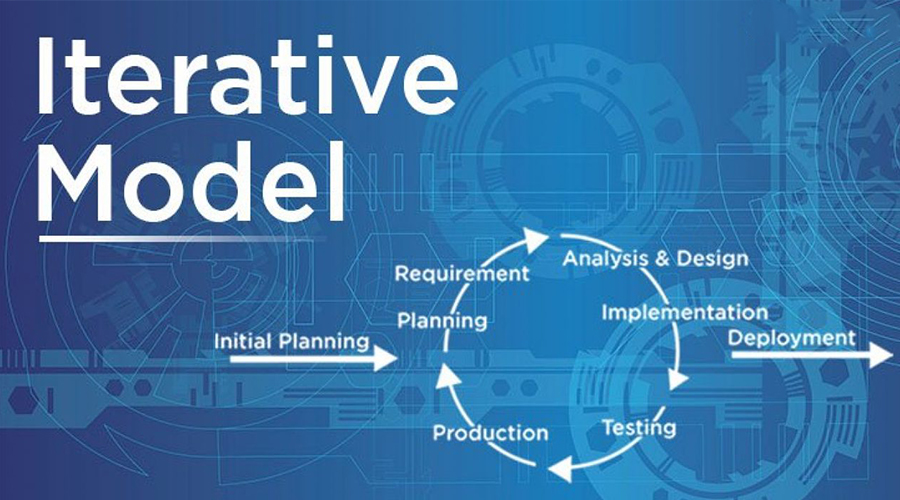 Back to all articles
Back to all articles
Blogs
Benefits of Iterative Development


Agile methodologies are one of the most frequently used software development tactics these days. The Iterative Development Method amongst all agile approaches offers supreme easiness in the software development execution.
The Iterative Development Method is executed in tiny steps, but you can very well attain intermediate results. This is why you are going to take a deeper dive into the iterative development process to know how it can be applied within your software projects. You will further get to know its benefits and how you can make use of them.
So, let’s get cracking!

Iterative Development Method
In essence, a software project is broken down into smaller chunks called ‘iterations’ to study design-related flaws in detail and to effectively cater to the development processes. These ongoing iterations are settled until the final software system is deployed to ensure curative measures on a limited budget.
Usually, you instantaneously begin with the development once you have the required specifications handy. But the model disapproves of this mindset. Instead, it teaches you to begin with the development by working on just a part of the software. You complete the iterations one by one, test them individually, and carry on with the procedure unless the complete software is created, tested, reviewed by the stakeholders, and deployed.
Iterative Development Process
Iterative Development entails the following four stages that are recurrent and used in order:
1- Requirement Gathering — you gather requirements for the software from the client and study them.
2- Design Implementation — after the gathered requirements are being analyzed in detail, you propose a solution to meet those requirements.
3- Test Phase — the proposed solutions are written as a code, tested, and deployed iterations by iterations.
4- Assessment Phase — you evaluate the software to ensure the asked requirements are catered to, in case of changes asked, you proceed with the additions to implement them.

The above-mentioned steps are applied to take a firm decision. You either discard the project for the next cycle or continue the development, which means prototyping.
The best decision would be to go through the following steps rather than to take a fresh start. Undoubtedly, you can reach a conclusion that is taken with mutual agreement and save a great deal of time.
It normal to encounter errors while designing a software project, but the question is, how to combat those slips? What do you do when you capture bugs later in the process? In some cases, you consider taking a fresh start but this slackness can lead you to substantial expenses.
In any other agile methods, it is sort of impossible to catch bugs in the early stages. But, Iterative Development can detect errors much earlier to prevent any risks., lessen them, or completely finish them off.
Benefits of Iterative Development
An iterative software development life cycle has the following benefits, let’s learn about them:
- Coding doesn’t begin until the entire software application analysis is completed. In this way, random and inappropriate errors can be avoided.
- The model is much flexible and cost-effective.
- It makes the QA process easier to implement.
- Risk management is easy to handle.
- There is flexibility for changes.
- You develop satisfactory end products.
In Essence
Iterative development is best suitable for large scale applications. It does not seem appropriate to break down a small project into even smaller iterations. You can:
- Detect potential defects.
- Functional prototypes can be developed at an early stage.
- Measuring a project becomes less painful.
- Changes can be easily implemented.
- Testing becomes easier.
- Operational time is reduced.
- Stakeholder feedback is timely gathered.
The iterative development process gives a chance to bring functioning software to the market at the speed of light. You require a proficient software development team to help steer the project clear of flaws and help prevent the project from failing.
NEXTBRIDGE has proficient engineers who work within the best technological framework at purpose-built Development Centers, to guarantee efficient communication and access to the best technologies. You can hire a dedicated developer for your projects.
Don't hire us right away
talk to our experts first,
Share your challenges, & then decide if we're the right fit for you! Talk to Us
Partnerships & Recognition
Commitment to excellence






